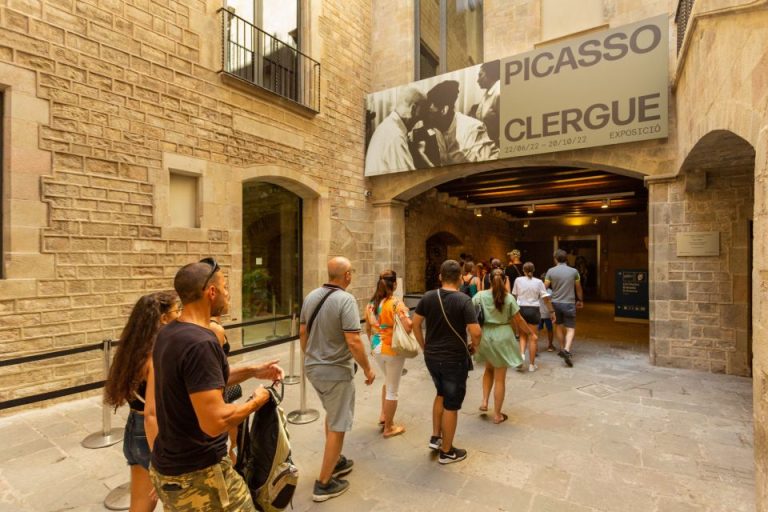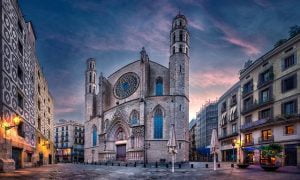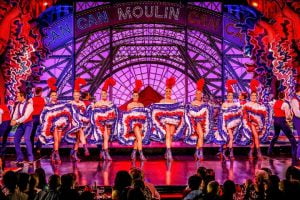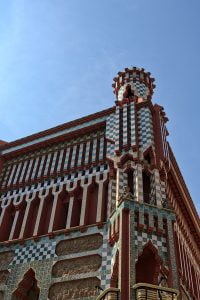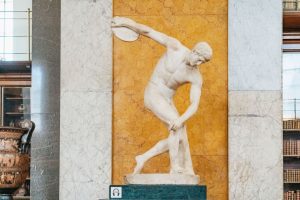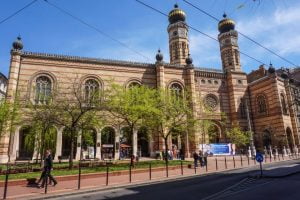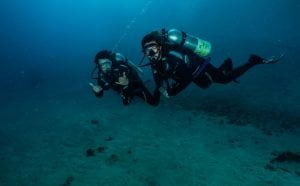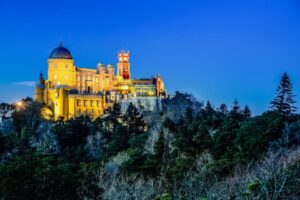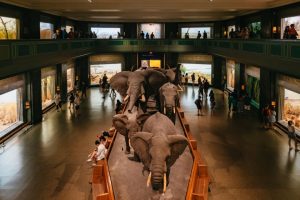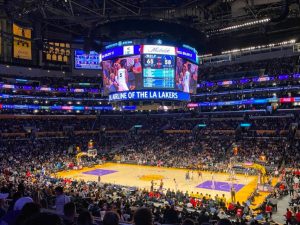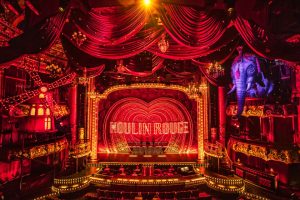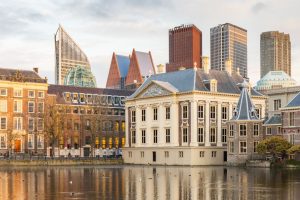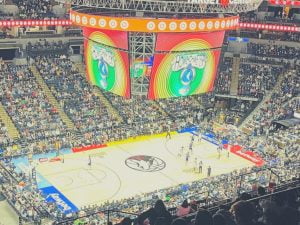Think of a world where art meets history, where every corner you turn reveals another flash of creative genius. Travel with us through the fascinating corridors of the Picasso Museum in Barcelona.
This magnificent and central cultural institution reveals the unparalleled depth of Picasso's art, allowing us to witness firsthand the development of his unique style. From his early academic studies to his later forays into surrealism and cubism, the museum's collection paints a holistic picture of Picasso's legacy. Dotted with his iconic masterpieces, the Picasso Museum in Barcelona is a journey into the mind of a creator whose profound influence on the art world is beyond doubt.
While this incredible collection of over 4,000 works is perhaps the most compelling attraction, the museum itself is not to be overlooked. Supported by historic Gothic architecture, the museum stands like a time capsule in the heart of Barcelona's artistic neighborhood, Bourne. But don't just listen to our word, experience it yourself. From detailed directions to the venue to visiting hours, ticket information and helpful tips, we have everything you need to plan an unforgettable visit.
Collection of the Picasso Museum in Barcelona
Located in the heart of the magical Born district, the Picasso Museum stands as an influential Barcelona institution, dedicated to celebrating the life and works of Pablo Picasso, who had an intimate relationship with the city. The extensive collection of over 4,000 works of art impeccably showcases Picasso's immense talent through different periods and styles. From his academic beginnings to his full realization, this comprehensive collection chronicles Picasso's artistic journey, truly a rare visual feast. 🎨
The collection includes a huge variety of mediums - captivating masterpieces of paintings, intriguing ceramic works, inspiring drawings and complex sculptures, each of which represents different phases of Picasso's life and career. Unique works from the Blue Period, the Rose Period, the period inspired by African art and Cubism, present a chronological timeline of Picasso's artistic development, revealing his experimental and innovative spirit. 👨 🎨
In addition, the Picasso Museum also celebrates Barcelona's profound influence on Picasso's formative years, successfully combining the narrative of the artist's legacy with his love for this vibrant city. The extensive collection effectively transports viewers into Picasso's world, documenting his paradigm shifts, and providing a glimpse into his influential role in art history. As one explores the museum, Picasso's connection to Spanish heritage and culture becomes clearer, indicating that the Picasso Museum in Barcelona serves as a perfect homage to this legendary artist. Find out more about the collection and its meaning in the following sections. ⏳😊
Picasso Museum of History in Barcelona
Home to one of the most comprehensive collections of Pablo Picasso's artwork, Barcelona's Picasso Museum tells a story that echoes the history of both the artist and the city. The museum began in 1963 and is deeply intertwined with Jaume Sabartés, a close personal friend and secretary of Picasso. Savarts conceived the idea of the museum as a tribute, and Picasso enthusiastically supported it, providing much of the initial collection himself.
Picasso's collection grew phenomenally through generous gifts from his family and close friends over the years. It was initially accumulated in Seberts' personal collection, but began to be donated to the museum after his death in 1968. This marked a significant milestone in the history of the Picasso Museum in Barcelona, making it the repository of Picasso's works that it is today.
Historic building
Palau Berenguer d'Aguilar), the building where the museum is located, is itself steeped in history. The hotel, built in the 15th century, embodies the Gothic architecture that Barcelona is known for. It was one of the first palaces in the city and continues to stand as a prime example of the Catalan Civil Gothic style. Its geographical location, in the heart of the Bourne neighborhood, adds to its cultural importance. This neighborhood is a historical and cultural hot spot in Barcelona, known for its narrow and magical alleys and its artisan boutiques - it adds to the charm and allure of visiting the museum.
In more recent history, the Picasso Museum underwent a significant expansion in 1986. Additional stately homes were purchased to expand the museum space, allowing for the addition of a library and classrooms for the museum's growing education department. This expansion reflects the museum's commitment to education and accessibility, fostering an understanding and appreciation of Picasso's vast body of work for all visitors.
The Picasso Museum embodies a unique historical narrative, combining the life and work of one of the most influential artists of the 20th century with the rich cultural heritage of Barcelona. A visit to the museum offers an extraordinary journey through time, revealing Picasso's indelible footprint on the world of art 🎨.
Masterpieces worth knowing at the Picasso Museum in Barcelona
It is impossible to fully understand the magnitude of Picasso's genius without knowing the main masterpieces that shaped his career and left an indelible mark on the world of art. Home to one of the most comprehensive collections of his artworks, the Picasso Museum in Barcelona is a haven where you can witness up close the progression and transformation of Picasso's artistic vision.
'Les Demoiselles d'Avignon'
Characterized by distortion of form and the first traces of Cubism, "Les Demoiselles d'Avignon" remains one of Picasso's most famous works. Although the original is held at the Museum of Modern Art in New York, the Barcelona museum provides an invaluable opportunity to study Picasso's preparatory sketches for this ground-breaking painting and observe his painstaking process that led to the creation of this masterpiece. The drawings reveal an exciting development from the initial stylistic adherence to tradition to a bold and unconventional distortion of perspective. (I.e.
'Guernica'
Interwoven with motifs of suffering and chaos, "Guernica" is a powerful political statement and a heartbreaking account of the war's aftermath. While it resides in the Reina Sofia Museum in Madrid, his drawings and engravings form an integral part of that museum's collection. These provide a glimpse of Picasso's response to the tragic bombing of the Basque town of Guernica during the Spanish Civil War. The black-and-white color palette, expressive figures, and strategic use of space all contribute to the lasting resonance of this painting. 🖌️
'The Blue Period' and 'Cubism'
The works from Picasso's "Blue Period" reveal a deep sense of melancholy, and capture the pessimist in Picasso's famous quote: "I interpret the world in terms of sadness and suffering." Conversely, his transition to the radical geometric abstraction of "Cubism", as seen in "Man with a Guitar", changed traditional concepts of art and established him as a bold innovator. These two diverse periods emphasize Picasso's versatility and depth, and mark his departure from the accepted norms of realism(I.e..
hidden gems
Beyond the reputation of the 'Blue Period' and 'Cubism', the museum houses lesser-known treasures such as early academic studies, ceramics, lithographs and a selection of his later paintings. Picasso's work reflects an incessant experimentation that stretches the boundaries of every medium he encounters, whether it is printmaking, ceramics or sculpture. This versatility does not only reflect his artistic ability; It reflects the uncompromising curiosity that defined his personality. 🖼️
Each masterpiece narrated in the labyrinthine galleries of the Picasso Museum in Barcelona becomes a dialogue, a story about the journey of a tireless artist in diverse mediums and stylistic metamorphoses. Together, they convey the inimitable art of Picasso, and have carved an indelible legacy in the sands of time✨.
Architecture - information about the building of the Picasso Museum in Barcelona
The Picasso Museum in Barcelona is housed in an architectural gem itself, Palau Berenguer d'Aguilar. This place combines the great elements of both Gothic and Catalan architectural styles, thus providing a distinct Barcelona backdrop for Picasso's works.
Standing proudly since the 15th century, Palau Berenguer d'Aguilar has been painstakingly preserved while maintaining the structure's rich historical integrity. Restoration and maintenance efforts are still ongoing, symbolizing the dedication to monumental perfection and the love art patrons feel for this location.
Expansion of the museum
In 1999, the museum underwent an expansion under the planning hand of architect Jordi Grasses. This addition dramatically enlarged the space, allowing it to house an extensive selection of Picasso's artworks, offering visitors an open-ended and curated journey through his prolific career.
The architectural fusion that the museum embodies creates a unique atmosphere for visitors. The historical architecture, combined with the modernity presented by Grasses, radiates an atmosphere that represents Picasso himself - a classic artist who relentlessly breaks boundaries and constantly reinvents his creative exploration. Therefore, when you navigate the museum, appreciate this architectural symbiosis that enhances your cultural absorption 🏛.
This description of architecture sets the stage for our further discussions on elements such as the museum's opening hours and the informative guided tours. Knowledge of architecture makes your visit to the Picasso Museum in Barcelona more satisfying when you understand the correlation between the artist and the space that houses his life's work.
Visiting hours - opening/closing hours? On what days?
Effective planning is the key to a satisfying visit to the Picasso Museum in Barcelona, so knowing the opening hours is critical. The museum opens its doors to art lovers, researchers and tourists from Tuesday to Sunday. On weekdays, except Mondays, the museum welcomes visitors from 9:00 a.m. to 19:00 p.m. On Thursdays, the museum has extended its operating hours until 21:30 p.m., allowing more time to immerse yourself in the art. However, the Picasso Museum is closed on Mondays, except for holidays. 🗓️
It is worth noting that the museum also operates during special hours during high-profile exhibitions and art events throughout the city. In such cases, visitors can enjoy night visits or early morning tours, a truly unique experience. It is also important to take into account seasonal changes. For example, the museum usually changes its schedules during the hectic summer months or the quiet winter season. 🌞❄️
In light of this, we suggest checking the museum's official website for the latest times and any special announcements before visiting. This way, you can better plan your visit and get the most out of this profound journey into Picasso's creative genius. 🎨
Picasso Museum in Barcelona directions
Barcelona is a thriving city with an efficient public transport system, making it easy and convenient to get to the Picasso Museum. One of the easiest routes to navigate is from the central and popular Plaza de Catalunya area. You can hop on metro line L 4 at Urquinaona station and get off at Jaume I, which is a short walk to the museum🚇.
For those staying near the bustling Barceloneta beach, just take the same L4 line at the Barceloneta station and get off at Jaume I. A 10-minute leisurely walk through the charming streets of the Born neighborhood, you will find the Picasso Museum.🏖️
bus lines
If you prefer traveling on the surface, several bus routes connect different parts of Barcelona with the museum. These include lines V15, V17, 45 and 120. The nearest station is "Princesa – Montcada", a stone's throw from the museum🚌.
Regardless of your starting point, look for the famous Gothic architecture of the Bourne district and the unique Catalan influence on its buildings as you make your way towards your destination. The Picasso Museum is located on Carrer Montcada, a prominent historical street lined with majestic buildings worth exploring🏰.
In this city, the journey to the museum is not just to get from point A to point B, but a cultural experience in itself. So, take your time, enjoy the journey and immerse yourself into the beauty and history of Barcelona. And remember, at the end of your journey there is an amazing collection of masterpieces, as discussed in the previous sections, waiting for you at the Picasso Museum in Barcelona.
Tickets to the Picasso Museum in Barcelona
The excitement of visiting the Picasso Museum in Barcelona begins the moment you secure your tickets. In our digital world, purchasing museum tickets is easy and highly recommended to ensure a smoother trip. The museum offers online ticketing services that not only help to avoid waiting in long lines, but also allow flexibility in terms of timing the visit. They can be purchased on the museum's official website where secure payment options are available. 🎟️
As for the cost, the museum offers different ticket categories to serve all its visitors. The general admission fee that grants access to the permanent collection and changing exhibitions. Special discounted prices are available for students under 25 and seniors over 65. 👩 🎓🧓 Children under 18 and unemployed can enjoy free entry. Also, please note that visitors can tour the museum free of charge every Sunday after 15:00 PM and on the first Sunday of every month.
For a more comprehensive experience, the Picasso Museum also offers combined tickets. These include tickets to both the museum and other cultural landmarks in Barcelona. This can be a budget-friendly option for those looking to immerse themselves in the rich art scene of this stunning city. Furthermore, the museum periodically engages in collaborations with other cultural institutions for special promotions, and be sure to check the official website for updates on such opportunities. 💰 🎭
Buying tickets in advance is a step you will thank yourself for. With your tickets in hand, you can just immerse yourself in the captivating magic of Picasso's art, uninterrupted and at your own pace. 🖼️
Picasso Museum in Barcelona guided tours
Experiencing the Picasso Museum in Barcelona can be incredibly rewarding, but opting for a guided tour can take your visit to the next level. Guided tours not only provide an opportunity to explore the overarching themes and specific nuances of Picasso's work, but also offer insights into his dynamic relationship with the city of Barcelona.
A guided tour can provide several benefits. First, you can gain a broader understanding of Picasso's artistic journey by having a knowledgeable guide explain Picasso's evolving styles, techniques, and motivations. This can be especially insightful when viewing masterpieces from his early years or the famous "blue period" where his work was deeply influenced by the circumstances of his life and environment. 🎨
The beauty of a knowledge guide
A guided tour offers access to a dedicated and enthusiastic guide, speaking many languages, who can weave the story of Picasso with charm and involvement - whether it is the story behind Picasso's popular works such as "The Guitar" or lesser known but equally intriguing works. The guide's artistic knowledge and storytelling skill can breathe life into Picasso's art, making his canvases speak and his sculptures reveal their hidden messages. 🗣️
Besides traditional guided tours, the Picasso Museum also provides audio tours. These self-paced tours allow you to explore the exhibits at your own pace while gaining a wealth of knowledge. An audio tour can be a viable option if you want more flexibility and independence during your visit.
However you choose to experience the Picasso Museum, it is important that you know that a guided tour can significantly deepen your appreciation of Picasso's art. They offer a fascinating combination of learning, exploration and discovery that can completely transform your museum experience. So, when planning your visit, consider a guided tour as a way to truly immerse yourself in Picasso's revolutionary legacy. 🏛️
Picasso Museum in Barcelona tips and recommendations
When planning a trip to the Picasso Museum in Barcelona, several tips can improve your visit. The museum abounds with works of art 🎨, spanning five separate palaces 🏰. As such, wearing comfortable 👟 shoes is non-negotiable. The vast collection can be overwhelming and may require a lot of time to explore. Be sure to allocate enough time - at least a few hours - so that you don't have to rush between exhibitions.
Do not hesitate to capture the allure of the museum with a photo 📸, respect the areas where it is allowed. This will allow you to carry back tangible memories of your visit. However, make sure that the flash is turned off and that the use of electronic devices is done in a respectful manner so as not to disturb other visitors.
Take a break and enjoy the goods
In between exploring, take advantage of the museum's facilities to rest and renew your energy. Several cafes ☕ inside the museum and near it allow you to enjoy a quick 🥪 meal or a refreshing drink. Also, these areas serve as great spots for reflection and conversations about the art you've seen. If you bring food or drink with you, remember, consumption inside the exhibition halls is prohibited.
Finally, try to include the nearby neighborhood in your visit. The Picasso Museum is located in the heart of the historic Bourne district, where you can explore many other cultural delights and gastronomic 🏛️ 🥘 pleasures. As part of your trip, take the time to wander this vibrant neighborhood. It's almost like a living art installation, adding another layer to your cultural exploration of Barcelona.
With the help of these tips and recommendations, you are prepared for an enriching and unforgettable visit to the Picasso Museum in Barcelona 🇪🇸. Don't forget to fully immerse yourself in this artistic 🖌️ journey.
Picasso Museum - multilingual tour options
For a more in-depth experience, consider the multilingual tours available at the Picasso Museum in Barcelona. The tours offer fascinating narration in different languages, and allow visitors from diverse backgrounds to delve deeper into Picasso's life and works. Here is a brief overview of the main language options and the aspects they cover:
| patrol zip code | שפה |
|---|---|
| English | A comprehensive exploration of the periods of Picasso's art, with particular attention to his early works, the Blue Period, and Cubism |
| Spanish | An in-depth study of Picasso's relationship with Spain and Barcelona, providing a cultural context for his works |
Frequently asked questions about the Picasso Museum in Barcelona
Get answers to your burning questions about visiting and touring the Picasso Museum in Barcelona.
- Is it possible to purchase tickets to the Picasso Museum on the day of the visit?
Yes, tickets can be purchased on the day of the visit, however, it is recommended to order online in advance to avoid long lines and secure your place, especially during the peak of the tourist season. - Is it accessible to people with disabilities?
Yes, the Picasso Museum in Barcelona is designed to be accessible to people with disabilities. It has elevators and wheelchair-friendly tracks. - Is the Picasso Museum in Barcelona suitable for children?
Certainly, children can enjoy the museum and learn about Picasso's contribution to art. Some of the interactive and educational activities are specially designed for children. - Are guided tours available in multiple languages?
Yes, guided tours are available in multiple languages. Check in advance which languages are offered during your visit. - Can visitors take pictures of the artwork?
Photography is allowed in certain areas of the museum, but it must be done in a respectful manner without flash and tripods. Specific graphics restrictions will be clearly marked. - Are there dining facilities inside the Picasso Museum?
Yes, the museum contains a cafe where visitors can rest and enjoy a meal or coffee during their visit. - Are there special exhibitions that rotate throughout the year?
The Picasso Museum in Barcelona often hosts special rotating exhibitions focusing on certain themes, periods or styles of Picasso. Check the official museum website for current and upcoming exhibitions. - How much time should you plan to spend at the museum?
The Picasso Museum is quite extensive, so it would be wise to allow at least 2-3 hours for your visit. However, the time can vary depending on your level of interest.
The benefits of visiting the Picasso Museum in Barcelona
A tour of the Picasso Museum in Barcelona offers many advantages. Starting from delving into the works of an artistic genius and ending with an enriching cultural experience, here are some key advantages:
- Cultural immersion: The museum offers an in-depth understanding of Picasso's contribution to Spanish art and culture, and provides a rich and enlightening cultural experience.
- historical architecture: The museum is housed in the historic Palau Beranger d'Aguilar, a stunning blend of Gothic and Catalan architecture that is a joy to explore.
- A comprehensive collection: With over 4,000 works of art spanning Picasso's entire creative journey, visitors can get a comprehensive overview of his artistic evolution.
- Guided tours: the museum offers Guided tours, who enhance the visitor experience with expert insights and detailed interpretations of Picasso's masterpieces.
- .: Located in the lively Bourne neighborhood, visitors can combine their visit to the museum with exploring other cultural and gastronomic delights in the area.
- accessibility: The museum is easily accessible by many means of public transportation, making it convenient for both local and international visitors.
- Online ticket booking: The option to order tickets online helps visitors avoid long lines and easily plan their visit in advance.

